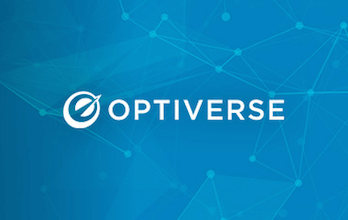
Download our FREE Testing Toolkit for A/B testing ideas, planning worksheets, presentation templates, and more!
Get It NowSearch Engine Optimization
What Is Search Engine Optimization?
Search engine optimization (SEO) is the art and science of getting pages to rank higher in search engines such as Google. Because search is one of the main ways in which people discover content online, ranking higher in search engines can lead to an increase in traffic to a website.
The Benefits Of SEO
Search engine optimization is a key part of online marketing because search is one of the primary ways that users navigate the web. In 2014, over 2.5 trillion searches were conducted worldwide across search engines such as Google, Bing, Yahoo, Baidu, and Yandex. For most websites, traffic that comes from search engines (known as "natural" or "organic" traffic) accounts for a large portion of their total traffic.
Search results are presented in an ordered list, and the higher up on that list a site can get, the more traffic the site will tend to receive. For example, for a typical search query, the number one result will receive 40-60% of the total traffic for that query, with the number two and three results receiving significantly less traffic. Only 2-3% of users click beyond the first page of search results.
Because of this, many businesses and website owners will try to manipulate the search results so that their site shows up higher on the search results page (SERP) than their competitors. This is where SEO comes in.
How Search Engine Optimization Works
Search engines such as Google use an algorithm or set of rules to determine what pages to show for any given query. These algorithms have evolved to be extremely complex, and take into account hundreds or even thousands of factors for determining the rankings of their SERPs.
However, there are three core metrics that search engines evaluate to determine the quality of a site and how it should rank:
- Links - Links from other websites play a key role in determining the ranking of a site in Google and other search engines. The reason being, a link can be seen as a vote of quality from other websites, since website owners are unlikely to link to other sites which are of poor quality. Sites that acquire links from many other sites gain authority in the eyes of search engines, especially if the sites that are linking to them are themselves authoritative.
- Content - In addition to looking at links, search engines also analyze the content of a web page to determine if it would be relevant for any given search query. A large part of SEO is in creating content which is targeted towards the keywords that search engines users are searching for.
- Page Structure - The third core component of SEO is page structure. Because web pages are written in HTML, how the HTML code is structured can impact a search engine’s ability to evaluate a page. Including relevant keywords in the title, URL, and headers of the page and making sure that a site is crawlable are actions that site owners can take to improve the SEO of their site.
The search engine optimization process involves optimizing each of these core components of search engine algorithms in order to rank higher in the search results.
Optimizing Search Traffic: From Clicks To Conversions
Search engine optimization done properly can have the potential to dramatically increase the amount of traffic that a website receives, but all of that traffic won’t help grow a business unless it converts into paying customers. This is where conversion rate optimization (CRO) comes in.
Conversion rate optimization involves using methods such as A/B testing to make changes to websites and measure the impact they have on a site’s conversion rate. Successful search marketers know that just getting traffic to a site is not enough, what the traffic does once it arrives on the site is just as important.
CRO was once a difficult and highly technical process, but thanks to software such as Optimizely, running tests to improve conversions on your site is as easy as inserting a single line of Javascript. Best of all, Optimizely’s visual editor allows you to make changes to a site without having to write a single line of code.
Optimizely is free to try out, so give it a try today and start increasing the value of your search traffic!
Ready to learn more?

Get your copy of the testing toolkit.
Use the testing toolkit to start or scale your testing program.

Want to stay ahead of the competition?
Help your organization master one of the four key initiatives covered in this webinar series.

Join the community.
Meet Optiverse — a place to explore, learn, and connect around experience optimization.